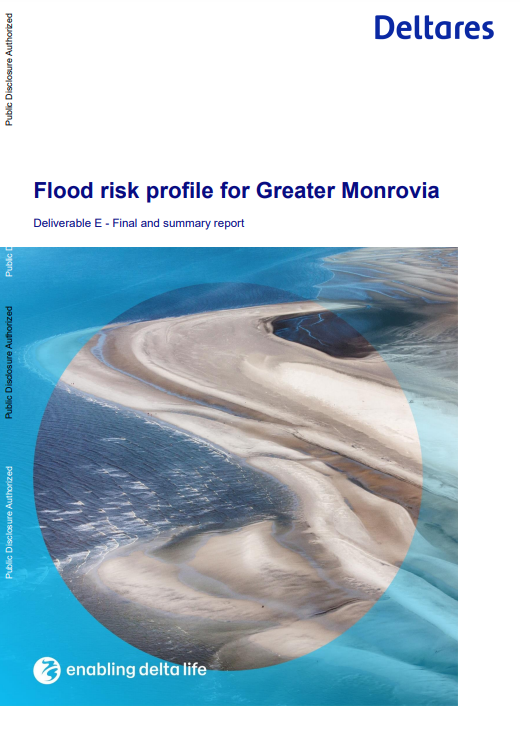This final summary report is the culmination of two stakeholder consultation workshops and extensive data analysis and flood modelling work. It supports the improved knowledge and understanding of flood risk in Greater Monrovia and contributes to the World Bank’s integrated urban development and resilience strategy in the region. The World Bank implemented the study with the support of Deltares, iLab Liberia and the stakeholders in Monrovia. The results show that direct rainfall flooding (referred to as pluvial flooding) is the most significant flood mechanism, resulting in the highest risk. This report describes pragmatic short-, medium-, and longer-term measures which may be applied to reduce risk in Greater Monrovia. They include long-term solutions, for the coastal and river flooding, but both will take significant amounts of time and financial resources to implement. So shorter term measures are also needed. Considering that flooding from direct rainfall creates the highest risk, short term measures that reduce flooding from the most frequent rainstorms is essential for Greater Monrovia. Reducing their vulnerability can be achieved in the short term by improving the living standard in the slum communities, improving the resilience of housing to withstand flooding, and reduce post-flood waterborne diseases through the provision of improved sanitation.
Flood Risk Profile for Greater Monrovia: Final and Summary Report
March 1, 2021 Read this publication

